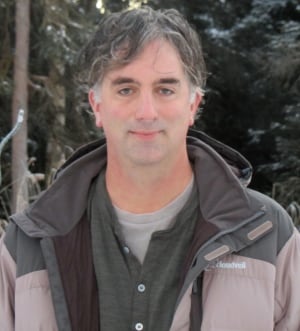High Inuit infant mortality rate may be related to fat-burning gene variation
New data shows a genetic variation that puts sick infants at risk is more common in the Inuit population than originally thought.
The gene, called CPT1A Arctic Variant, is found only in Inuit populations and has been found across the circumpolar world — including Canada, Alaska, Siberia and Greenland.
People with the Arctic variant are unable to produce an enzyme that helps turn fat into energy. That means their bodies are not able to switch into fat-burning mode when blood sugar levels get low.
“We think that babies, especially those under one or two years of age, could be getting into trouble with this when they get sick and are not able to eat for long periods of time,” says Dr. Matt Hirschfeld, a pediatrician at the Alaska Native Medical Centre.
“It seems like if they have Arctic variant they are at higher risk of getting sicker than kids that don’t have this.”
Alaskan testing
Since July, every baby born in Alaska has been tested for the genetic variation. Hirshfeld says about half of the Yupik and Inupiat babies born in that period were found to have two copies of the gene, which means their bodies are unable to switch into fat-burning mode. A quarter of babies from other Alaskan indigenous populations had two copies.
“We figure this is the normal gene in Yupik and Inupiat people,” says Hirschfeld.
“We think that is true in Siberia and Canada and Greenland as well. We think there are the same rates in those areas.”
Connection to high infant mortality rates
Nunavut and the Northwest Territories have the highest infant mortality rates in Canada. In 2012, Nunavut’s infant mortality rate was four times higher than the national rate.

Matt Hirschfeld, a pediatrician at the Alaska Native Medical Centre, says he has advised parents and health care providers to make sure sick babies are eating every six to eight hours and to get them to a health centre for glucose-containing IV fluids if they’re not. (submitted by Matthew Hirschfeld)
Hirschfeld says the rates of children who die before their first birthday are similarly high in Inupiat and Yupik regions of Alaska.
“We’ve never been fully able to explain why the infant mortality rates are higher in those regions relative to other parts of the state that have many of the same rates of smoking, and overcrowding and things like that.”
Preliminary research into how Alaskan babies died in the first year of life has shown there might be a link to the Arctic variant of CPT1A.
“If you had two copies of the Arctic variant of CPT1A you were more likely to have died if you had a respiratory illness in the first year of life,” Hirschfeld says.
“It wasn’t associated with SIDS (Sudden Infant Death Syndrome) or with kids who died of an accident or congenital heart disease. It was always associated with some sort of illness.”
Hirschfeld says researchers think babies with the Arctic variant gene are at increased risk of having more problems when they get sick because they can’t switch to fats for energy and don’t have as much reserve energy to get through the illness.
Advice for parents and health care providers
Hirschfeld says he started giving specific advice to parents and health care providers even before anyone knew just how prevalent the genetic variation was.
“The take-away is essentially these babies typically do very well if they are healthy.
“If your baby is sick and has a fever, breathing hard, just make sure you can get them some sort of glucose-containing fluid — breast milk, formula or Pedialyte. If they can take that every six to eight hours and they are still awake and are sick but are still able to take fluids, they are probably going to be fine.”
If the child is sleepy and lethargic and can’t take in any glucose-containing fluids in that six to eight hour window, it’s time to head to the health centre.
“For the health care provider it is all about getting an IV in and some glucose containing fluids,” Hirschfeld says.
Selected-for advantage
Hirschfeld says are still a lot of unanswered questions about this genetic variation — including why it is only found in Inuit populations.
“It appears that this particular version of the gene, the Arctic variant, was selected for. Meaning it wasn’t just a random mutation,” Hirschfeld says.
Hirschfeld says scientists hypothesize it may have provided an advantage to Inuit whose traditional diet is high in protein and fat, but low on carbohydrates.
“We actually have a couple of studies looking at traditional diet people versus people on a more Western diet to see if that [genetic variation] truly is advantageous or not but we think that diet selected for that gene.
“Now that people have switched to a more Western diet that advantage may be not as strong any more.”